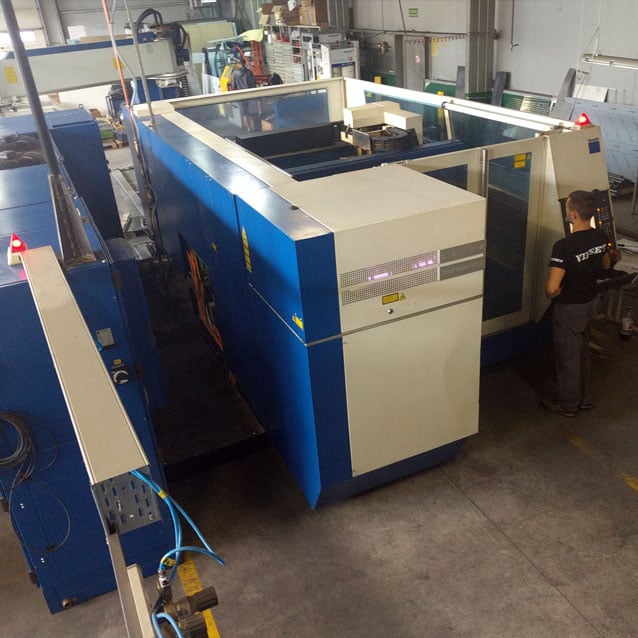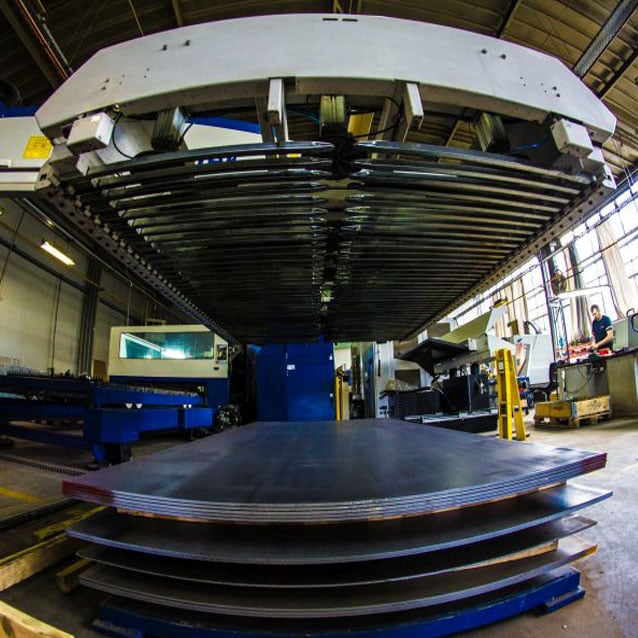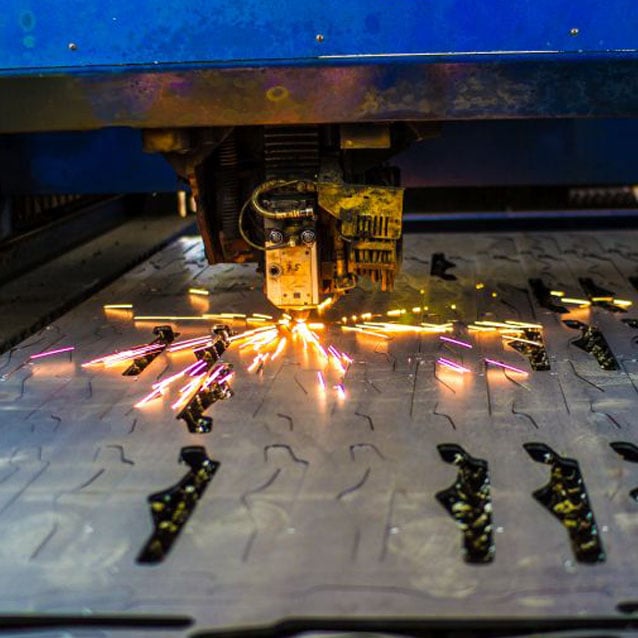Laser cutting
One of our newest machines in the park is a 4kW Trumpf laser model TruLaser 3530. It is a machine that sets new standards for speed and quality of processing.
This device uses an additional X axis (Xp) which carries only the cutting head. Due to the reduced weight, higher acceleration values are achieved during the positioning process. As a result, the machining process, especially for thin sheets, is much faster.
Our laser is also equipped with a Liftmaster loading module that loads the sheets of metal onto the pallet changer. This is done by moving the sheets away from the charging station using the suction cups on the machine frame. This essential feature not only helps the operator to ensure optimal machine performance, but also minimizes the risk of damaging sensitive materials.
The laser control unit of the TruLaser 3530 has also been improved. The additional PierceLine function lowers the piercing cycle time, thus saving material and reducing machine wear. Another improvement is the introduction of Flycut. It is an impressive and effective technology for the production of perforations on the laser at incredible speed. This is done by turning the laser beam on and off while the cutting head moves rapidly across the sheet.
The technological process of laser cutting.
Laser cutting is currently one of the most efficient cutting processes and enables non-contact processing of almost all material groups. Laser cutting allows you to perform a variety of cutting tasks with the highest level of quality and extremely low material losses. Regardless of whether you are processing tile-shaped materials or three-dimensional geometries - the laser enables precise micrometric cuts in metal, plastic, paper or stone.
The development of innovative fiber lasers has made laser cutting the most economical cutting process today, especially in the field of thin sheet metal processing. This is because it is possible to produce a wide variety of contours while maintaining high cutting speeds and the fact that usually the entire process does not require post-processing. Typical application examples for the laser cutting process are the production of covers, round blanks or pipe processing, sheet metal cutting, engraving and much more.
What are the laser cutting processes? Depending on the material, application and mode of operation of the laser used, laser cutting is divided into the following processes:
- Laser beam cutting.
Cutting with a laser beam ensures high quality of cut and is extremely precise. In this process, the material melts along the contour to be cut with the laser beam, and the alloy produced during the cutting process is blown away by a high-pressure gas jet. The energy of the laser beam is delivered with the highest accuracy, thus preventing the undesirable formation of oxides.
- 2D laser cutting.
For tile-shaped materials, 2D laser cutting is the ideal production solution as almost all material groups can be processed quickly and at low cost. Compared to conventional processes such as the advantages of this technology apply to punching as even small amounts can be produced in high quality and economically. - Flame laser cutting.
Laser flame cutting is based on the same operating principle as fusion cutting and is most commonly used for cutting thick materials. However, pure oxygen is blown at the junction which reacts with the material and creates high thermal energy. This enables the material to be cut selectively and the alloy is blown out of the kerf. - 3D laser processing.
3D laser cutting is used wherever complex 3D geometries need to be produced with absolute dimensional accuracy. The treatment process takes place on laser cutting systems, which also allow combined laser cutting in one operation. Typical applications are the production of three-dimensional openings or bodies. - Laser sublimation cutting.
In sublimation laser cutting, the material is vaporized by a laser beam with a very high heat generation. This process is called sublimation and it avoids the formation of molten material. Therefore, the entrained gas stream is not used to blast the kerf, but to protect sensitive lenses and mirrors. Typical examples are cutting plastics with sharp cut edges. - Tube lasers.
Tube lasers are made on laser cutting machines that combine several conventional methods for processing tubes and profiles in one work step. This means that not only round tubes can be processed with the laser, but also square, rectangular or oval tubes, and contours can be created in one setup.


